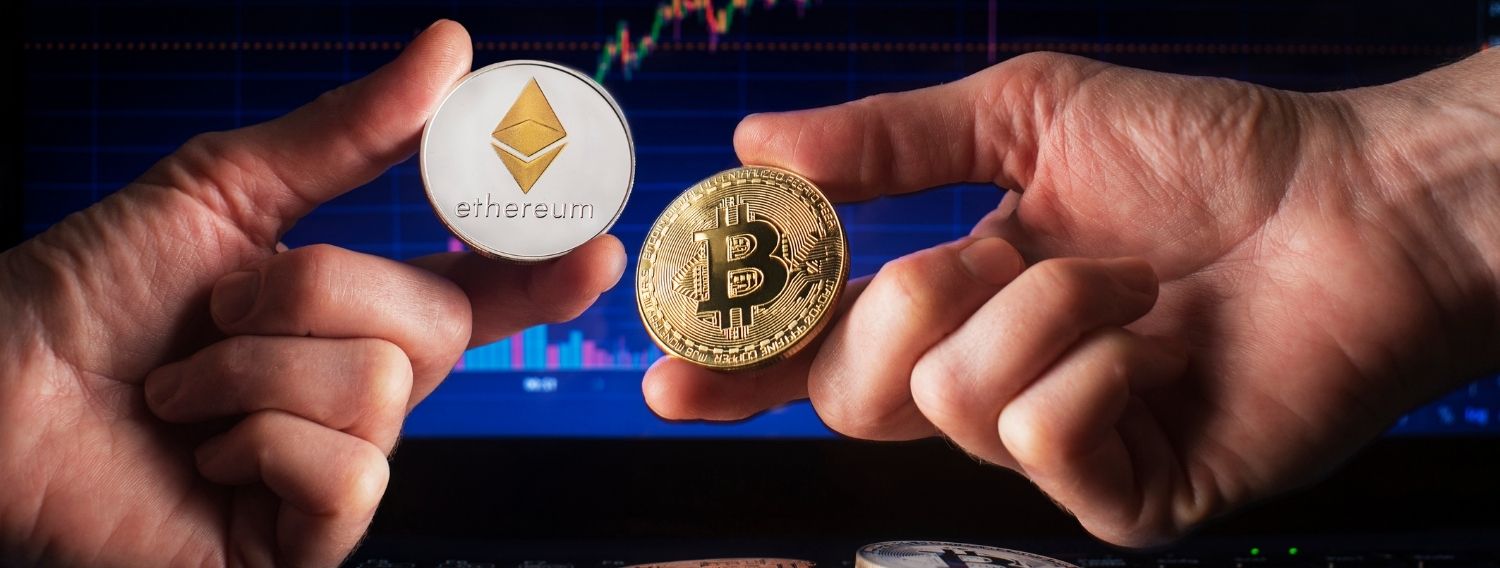Ethereum ranks ahead of Bitcoin in terms of usage and market relevance. In fact, it is the world’s largest used blockchain and the most preferred platform for building smart contracts. The Merge refers to Ethereum’s long migration process from Proof of Work(PoW) to the less energy-intensive and more efficient Proof of Stake(PoS) mechanism. But, why is the event important enough for the entire crypto-sphere to wait with bated breath?
Data from the OKLink blockchain browser countdown confirms the Merge process is 96.6% complete and depends upon the hash rate, the process is likely to be completed on September 15 this year. The current hash rate remains at 881 TH/s. Ethereum core developers acknowledge that ETH’s shift to the PoS mechanism will be the most vital upgrade in crypto history
The long-planned upgrade to make improvements to the existing Ethereum network will enable developers to put forward several new features across the entire network. The Merge event will, literally, merge the existing public Ethereum mainnet used by everyone with the Beacon Chain, a separate chain currently existing in parallel. At present, only the Mainnet is being used for processing transactions.
Also Read: How to Track Stolen Cryptocurrencies?
Blockchain utilizes a consensus mechanism for the validation of crypto transactions registered in the decentralized blockchain ledger. There are two common consensus mechanisms- Proof of Work and Proof of Stake. Both Bitcoin and Ethereum were built on the prevalent PoW mechanism.
The shift from PoW to PoS will result in the Eterheuem network relying only on trusted entities or validators. The distributed database of nodes requires a consensus for validating data and consequent decision-making. The validators will be chosen on a random basis, during the addition of a new block. Estimates suggest new blocks will be added every 12 seconds on average.
Also Read: How Blockchain Technology Can Improve Supply Chain Management?
Any person can apply for the position of a validator once they deposit 32 ETH(approx $61,000 in current market value). The amount ensures that participants can grab a stake in the network’s success and uses updated software.
As per information available on the Ethereum Foundation, the potential validators will be added to a prospective activation queue list. The process is done to limit the rate of new joinings in the network. Only an “Activated” validator is eligible for verifying and authorizing new blocks on the Ethereum blockchain. As a reward, they will receive ETH tokens.
In addition to 32 ETH staking collateral, there are also additional punishments for inaccuracy or incompetence. They can be penalized by burning partial or their entire ETH deposits. While the Merge isn’t exactly complete, the Beacon Chain already registered over 415,000 validators.
As explained before, Ethereum is the most used blockchain in the world with its native crypto token having a market cap exceeding $191 billion at present. The blockchain network powers countless decentralized applications or dApps in addition to Decentralized Finance(DeFi) protocols. The Ethereum blockchain is also instrumental in authenticating NFTs(non-fungible tokens).
The Merge will thus impact not only Ethereum but the entire list of products and applications built upon this blockchain platform. Considering the prevalence of the Ethereum blockchain, the Merge will undoubtedly create a ripple effect across the entire crypto ecosystem.
The PoS switch will also impact countless Ether miners, who have already made significant investments in their mining equipment. Miners are likely to switch to other PoW tokens. However, the Merge is the better option in the total perspective, including environmental factors as well as overall efficiency. The switch from PoW to PoS will result in 99.9% savings in Ethereum’s total energy consumption.
In addition, the Merge will lead to a decrease in new Ether issuance. The Ether token, post merging, is more than likely to become the biggest deflationary currency. The abolition of ETH mining will result in a decrease in ETH issuance by as much as 87%. Projections suggest that the net issuance will range from 1.5% to 0.5%. The decline in crypto issuance will raise Ethereum’s market cap, which as per speculations, will surpass Bitcoin within the upcoming year.
Ethereum developers also revealed there are four separate phases occurring in parallel in the network’s roadmap, commonly termed the “surge, verge, purge, and splurge”. All the processes are being developed with a common objective in mind- to improve the speed, safety, and extent of decentralization of the Ethereum network. According to Ethereum founder Vitalik Buterin, the Ethereum network after the Merge will be a much higher scalable system, capable of processing 100 thousand transactions each second.
Despite overwhelming support, there is a minute section of naysayers who are critical of the Merge. While a bit of self-interest is involved, some of the negativity is rooted in ideological shifts.
As per critics, the PoS switch will drive Ethereum towards centralization reducing its security. Others point toward the predominance of particularly few organizations in the Beacon Chain. Messari, a blockchain data firm, highlighted how the majority of staking on the Beacon Chain will be controlled by a collective of three entities- Lido Finance(31.2%), Coinbase(14.7%), and Kraken(8.5%).
It is easy to figure that the above three organizations are custodians of countless smaller Ether owners, and do not actually possess most of what they have in holdings. However, centralization possesses a valid concern nonetheless, including the fear that law enforcement agencies may target validators for censorship and surveillance.
Buterin has already addressed this concern through his Twitter, voicing his support for stake-burning to validators requested by US regulators to censor the protocol of Ethereum. Coinbase CEO Brian Armstrong echoed similar sentiments, acknowledging he’d prefer to “stop staking rather than comply with censorship”.
The Merge will not be reducing Ethereum’s gas fees(the operational cost for proceeding with a transaction on the Ethereum blockchain). The network capacity does not increase with the ETH switch to PoS, thereby keeping the gas fees unaffected. The Merge will initially lead to the devaluation of Ether, as it will become a deflationary asset. Crypto market analysts believe the true value of ETH will be realized once the other four phases finish.



No Comment